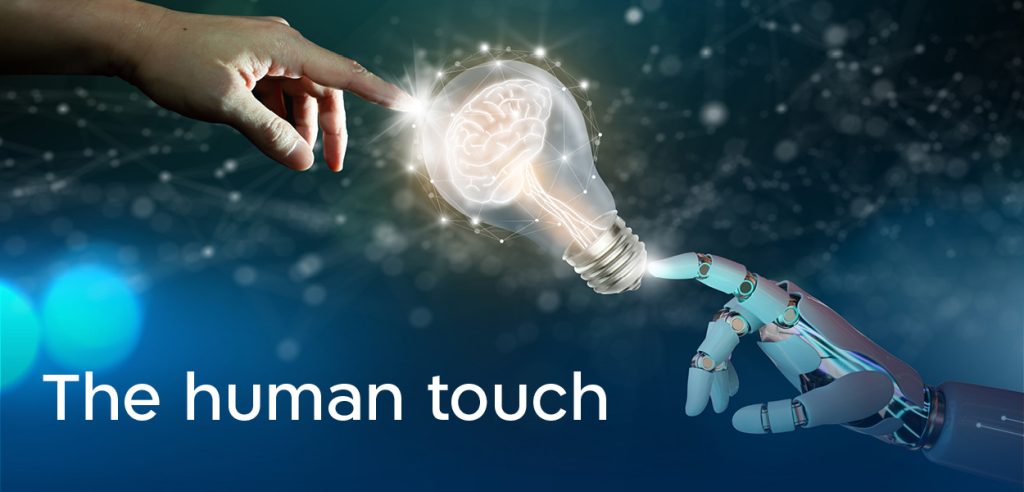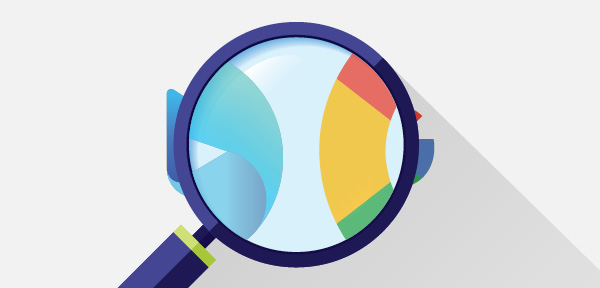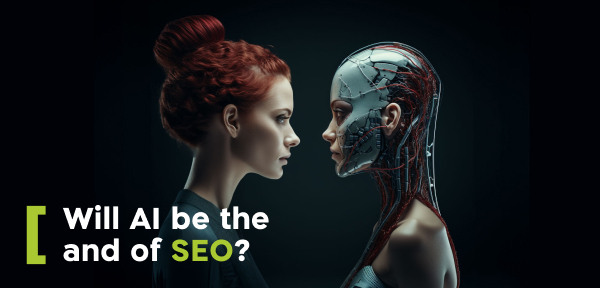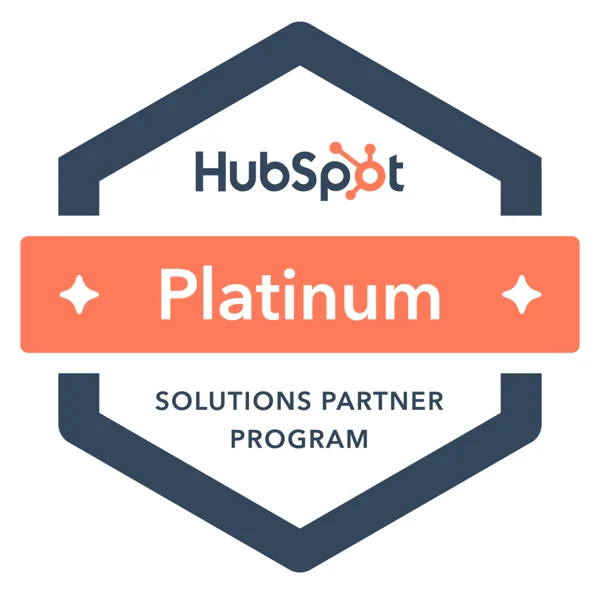The BL[OZ]
From SEO to GEO: How to Make Sure Your Content Shows Up in AI Engines
By
Einat Talal-Cohen
, 29/06/2025
Your brand is more than just a logo - it’s a powerful strategic tool. Discover how CEOs can leverage branding to build trust, differentiate, and drive business growth.
min read
SEO to GEO marks a new phase in online success. For years, success online meant ranking high on Google. And that’s still true - but search itself is expanding. Today, visibility doesn’t stop with search engines.
It also means showing up in AI-generated answers from tools like GPT-4o, Gemini, and Claude.Here are some facts you need to know:
- 67% of technical queries never make it to Google
- They’re being answered instantly by ChatGPT, Claude, or Perplexity
- Google’s AI Overviews now appear in ~13% of all searches - up from 6.5% in January 2025

If your brand isn’t part of those answers, you’re invisible to a growing share of your market.
Search behavior is evolving:
- Queries are longer (23 words on average, not 4)
- Sessions are deeper (lasting around 6 minutes)
- And AI engines don’t just search - they remember, reason, and respond with personalized, conversational synthesis
SEO still matters. But it’s no longer enough on its own. That’s where GEO - Generative Engine Optimization - comes in: the next evolution in making sure your content gets seen wherever people search for answers.

Here’s how to start positioning your content to show up where it matters most:
5 Ways to Optimize Your Content for AI Engines
1. Build Topical Authority, Not Just Keyword Lists SEO taught us to chase keywords. GEO rewards expertise. AI engines prefer trusted sources that consistently publish valuable content on specific subjects. What to do: Create content clusters. Go beyond isolated blog posts and build topic ecosystems: guides, FAQs, thought leadership pieces, and deep dives. 2. Write Like You’re Explaining It to a Smart Friend AI engines favor content written in a natural, conversational tone. If it reads like stiff marketing jargon, it’s likely to be ignored by LLMs. What to do: Break down complex topics clearly and simply. Use questions, summaries, and direct answers. Write to inform, not impress. 3. Format for Easy Extraction AI engines love content that’s easy to lift, quote, and summarize. Dense paragraphs are ignored - clarity wins. What to do:- Use H2s and H3s properly
- Add bullet points and numbered lists Start with a TL;DR or summary whenever possible Think: Could ChatGPT easily use this paragraph in an answer?
Final Thought: Be Part of the Answer
SEO isn’t dead. It’s evolving. GEO is the next layer, giving your brand the power to show up not just in search engines but in the AI-generated answers people increasingly trust.Will AI Replace Designers or Serve as Their Creative Allies?
By
Yoav Sondak
, 21/02/2024
Will AI replace designers, or will it become their indispensable assistant? Can anyone become a designer with AI's help? Discover Yoav's insights after extensive experimentation with AI tools, and learn what AI itself has to say about the matter
min read
As designers, AI is having a significant impact on the way we work. Designers have been using AI tools available in widely used design software such as Adobe Photoshop and Illustrator for some time. In OZ’s design department, we’ve also experimented with a variety of dedicated AI image generators, such as Midjourney, DALL·E 2, and eluna.ai. New applications are popping up all the time, so it’s worth trying them out and comparing them, to see what works best.
Since this article is about AI, let’s get some input from ChatGPT about the benefits of integrating AI capabilities into software design tools: “It’s not only enhanced the capabilities of designers but has also redefined the creative process, ushering in a new era of efficiency and innovation.” So far, so good.
While there are lots of advantages to using AI in design work, here are some key features:
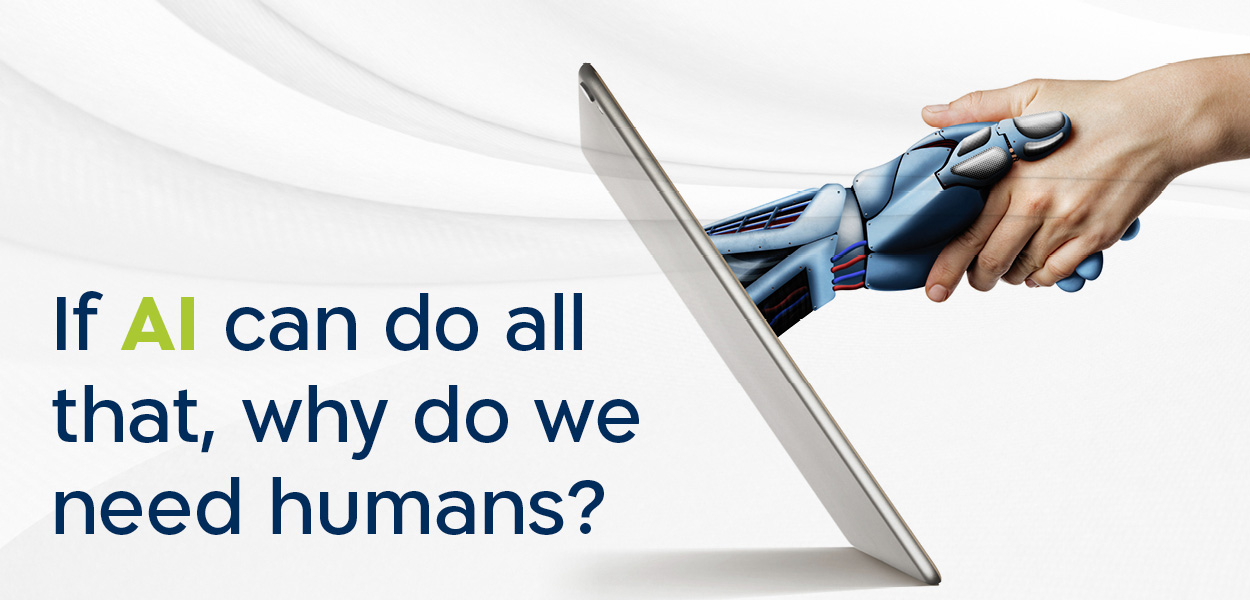

- Automated image editing features — analyzes images to intelligently suggest enhancements and automatically makes adjustments such as color neutralizers and detail enhancers. This speeds up the editing process and is a valuable resource if you’re looking for inspiration or need to make quick refinements.
- Content-aware fill and object removal tools — by understanding the content of the image, enables you to easily remove unwanted objects or fill in gaps within a scene. This allows greater flexibility and streamlines the editing workflow.
- Accelerates the ideation and iteration phases — lets you explore diverse concepts efficiently.
- Intelligent recommendations — makes suggestions for shapes, layouts, and color schemes based on the context of their project. This makes the conceptualization phase faster and may even help you overcome a creative block.
- Organization and management of design assets — automated tagging and content categorization make asset management easier and help you quickly navigate vast libraries of resources. It’s able to analyze vast datasets and identify patterns that we might miss.
- Rapid prototyping — enables quick experimentation with lots of variations.
Traditional graphic tools have also made huge strides
In recent years, existing software and applications we’ve been using for years have incorporated a variety of tools that shorten processes and streamline design work. Because designers can give online feedback, the tools' capabilities keep getting better. During image processing, design tools can complete missing details, increase resolution, carry out color corrections, and produce more controlled and accurate results. There are also lots of options for image manipulations and variations. These advances have meant that the time between planning and the finished product is much shorter, and have saved me and many others from a tiring technical struggle with traditional design tools. However, AI has added new superpowers which can create impressive artwork at warp speed.
If AI can do all that, why do we need humans?
While AI provides a broad range of design options and there is a wealth of tools to choose from, the act of selection and focus during the design process has become more challenging. The need to differentiate the customer’s brand, memorably present their messages, and tell their unique story means that every designer needs a clear understanding of what they want to create using the tools. Formulating the design prompt and selecting results, when every result seems to be ‘beautiful and impressive’, means that designers need to carefully examine what is ‘right and appropriate’ — and ask themselves what will yield the desired results. It’s the same question that we’ve been asking for years when approaching a design task, long before AI tools entered our lives.The human touch
“While AI excels at generating designs based on existing patterns, it lacks the intrinsic understanding of cultural nuances, emotional subtleties, and context that human designers bring to the table,” responds ChatGPT, adding that design is not only about aesthetics but also about storytelling, conveying emotions, and understanding the audience – elements that are deeply embedded in human experience. It goes on to point out that the human mind possesses the ability to empathize, interpret abstract concepts, and infuse designs with cultural relevance. Designers are adept at translating complex ideas into visual narratives that resonate with people on a profound level. “The intangible aspects of creativity, intuition, and emotional intelligence are quintessentially human and crucial to the design process,” it notes.
Don’t fire your designers!
Bearing these unique human attributes in mind, ChatGPT’s conclusion is almost inevitable: While AI image generators are valuable tools, amplifying designers’ creative capacities and streamlining workflows, they are best seen as collaborators rather than replacements. The future of design lies in a harmonious collaboration between human designers and AI, where each contributes its strengths. While AI enhances the design process by offering efficiency and inspiration, according to ChatGPT, “the unique qualities of human creativity, ingenuity, and understanding will continue to be an indispensable force in the world of design.” As with any AI application, there are ethical considerations. Designers must “be mindful of potential biases in AI algorithms and exercise discretion in their application. Striking a balance between automation and human intuition remains crucial to preserving the authenticity and creative vision of the designer.” ChatGPT predicts that “As technology continues to advance, the symbiotic relationship between AI and design is poised to reshape the industry, unlocking new realms of creative possibilities.” On a personal level, I use AI design tools daily to carry out various tasks and to fuel my creative process. I also find that ChatGPT is useful in helping to formulate prompts and finding the right wording for the industry or application. The more accurate the prompt, the better the results. However, personal experience has shown AI can’t replace the invaluable interactions between our design team and our clients. We’re able to dig deep into their story and translate that into unique and powerful visuals that communicate their brand promise. It’s the ‘secret sauce’ that makes the difference. In short, AI will become our creative allies, but they’re not going to replace us any time soon.How AI Powers Your Marketing & Sales Engine
By
Liron Ramot
, 03/10/2023
Ready to supercharge your inbound marketing game with AI? Say "Aye!" If you're a HubSpot user looking to boost your content creation and sales processes, we've got something exciting for you. Discover how AI can be your secret weapon! Curious to learn more? Click the link to unveil the full potential of HubSpot's AI tools and start revolutionizing your marketing strategy today.
min read
If you’re already using HubSpot to fuel your inbound marketing strategy and drive sales, it’s time you took AI out for a spin
Constantly writing content to fuel your inbound marketing funnel can be time-consuming and costly. While ChatGPT isn’t going to replace your talented content team anytime soon (if at all), it can prove very useful in helping your team conduct research, generate content ideas, and write basic drafts for your team to finetune — so that you can generate more content, faster. It also helps your sales teams focus on closing deals instead of being bogged down by manual tasks. As a HubSpot user, it’s all your fingertips.Say goodbye to writer’s block
Having trouble generating the volume of content you need? Call on HubSpot’s friendly Content Assistant to create or refine web copy, blogs, articles, emails, and more. Using AI, you can generate ideas, outlines, or paragraphs for your required topics. You can also generate sales emails, titles and meta descriptions for pages and posts, and social posts. Simply answer the prompt, “What’s this social post about?” review the result, and tweak until you’re satisfied the post meets your standards. Not writing in English? Set the target language for the required content. Once a language is set, any generated text will automatically be output in that language.Four ways to tweak existing content
Using the “highlight” command, you can rewrite, expand, summarize, or change the tone of the text you’ve highlighted. It’s quick and efficient. Rewrite - Generates different wording for the highlighted text Expand - Elaborates on the content of the highlighted text Summarize - Condenses the highlighted text Change tone - Rewrites the highlighted text in the selected tone: friendly, professional, witty, heartfelt, or educational Beyond using the highlight command, you can also generate headings, paragraphs, and subsections based on your existing content. Clearly describe the content you require and select the required output. Remember to be very specific, use simple language, and provide examples to clarify the context and tone of your request. If at first you don’t succeed, try, try again. Experiment with different prompts until you get the output you need.Best practices for AI-generated content
- Always proofread and edit all your content before you publish it.
- Maintain your brand's voice and style – your tone of voice must be consistent through all marketing materials.
- It’s not all or nothing — remember to balance your AI-generated content with human-generated content.
- Check, check, and check again. While HubSpot has put security measures in place, content assistant may occasionally generate inaccurate, skewed, inappropriate, or misleading information. Make sure you verify the accuracy of the output's content, particularly any statistics or facts.
Streamline your daily sales workflow with ChatSpot.ai
Another great AI tool in the HubSpot toolbox is ChatSpot.ai, which helps your sales team save time and maximizes productivity by carrying numerous daily tasks. It can assist with lead management, adding contacts and companies to HubSpot’s CRM, including specific notes, assigning tasks, and sending reminders as well as personalized follow-up emails – all through simple chat-based commands. It quickly identifies prospects based on specific criteria (such as industry, location, and size) and provides a list of high-potential leads. It’s easy to create real-time custom reports on key metrics, including website visits, lead conversions, and revenue in an easily digestible format. It also aids with forecasting, listing the deals closing within a specific timeframe, the deal stage, as well as anticipated revenues. In short: It simplifies and streamlines your team’s daily workflow, cuts down on time-consuming manual tasks, and helps your sales team do more in less time. All those ready to start using AI, say “Aye!”Is your website “Bing-ready”?
By
Orly Gilad
, 16/07/2023
This blog highlights essential points for SEO practitioners targeting Bing and Google. Topics include keyword research, social media integration, backlinks, local SEO, rich media content, and technical SEO. Stay updated with evolving algorithms for the best results. For more information, consult reputable SEO blogs and industry websites.
min read
With the rising popularity of AI-powered search and ChatGPT in particular, there's a respectively rise in Bing popularity as a search engine.
Are you ready for the new audience on your website?
Here are some general points to consider when comparing SEO for Bing and Google:
Here are some general points to consider when comparing SEO for Bing and Google:
- Keyword Research: While Bing and Google both consider keywords relevancy as an important factor for SEO, they may have different algorithms for how they interpret and rank keywords. It's important to research and optimize for search terms that are relevant to both Bing and Google search results. ➭ For example, After conducting keyword research, you may find that [your company solution] + USA are popular search terms on both Bing and Google. By optimizing your content for these keywords, you'll increase the chances of appearing in search results on both search engines.
- Social Media Integration: Bing tends to give more importance to social media integration and social signals, such as social media shares, likes, and comments, compared to Google. Incorporating social media strategies into your SEO efforts may be more beneficial for Bing rankings, so be sure to promote your content on social media platforms like LinkedIn, Twitter, and Facebook, encouraging shares, likes, and comments to improve Bing rankings.
- Backlinks: Both Bing and Google consider backlinks as an important ranking factor, but they may have different algorithms for evaluating the quality and relevance of backlinks. It's important to understand the differences and optimize your backlink strategy accordingly. ➭Request backlinks from authoritative industry websites or thought leaders to enhance your website's credibility and rankings on both Bing and Google.
- Local SEO: Bing tends to place more emphasis on local search results compared to Google. Optimizing your website for local SEO, by including location-specific keywords like "top Global B2B agencies in [Israel]" ;) will help optimize your local listing, and getting local citations, will be beneficial for both Bing and GMB rankings.
- Rich Media Content: Bing tends to place more importance on rich media content, such as images and videos, compared to Google. Including relevant images and videos with proper optimization may help improve your rankings on Bing.
- Technical SEO: Both Bing and Google consider technical SEO factors, such as website speed, mobile-friendliness, and crawlability. Optimizing your website's technical aspects according to the guidelines of both search engines can help improve your SEO performance on both Bing and Google.
➭ To find the technical guidelines for both Bing and Google, you can refer to the official documentation and resources provided by each search engine:
Additionally, both Bing and Google offer webmaster tools that provide insights into your website's performance, indexing status, and potential issues. These tools can help you optimize your website according to the search engine guidelines, improving your overall SEO performance.
- Bing Webmaster Tools: https://www.bing.com/webmasters/
- Google Search Console: https://search.google.com/search-console
AI vs SEO: Will AI be the end of SEO?
By
Orly Gilad
, 14/06/2023
As ChatGPT gains momentum, concerns are growing regarding its impact on everything from coding to SEO. It depends on who you ask, but the current consensus is that AI is not likely to kill Search Engine Optimization. In fact, it may actually prove quite useful in enhancing and optimizing SEO efforts. AI-powered technologies can provide insights, automate tasks, and improve the efficiency of SEO strategies.
min read
As ChatGPT gains momentum, concerns are growing regarding its impact on everything from coding to SEO.
It depends on who you ask, but the current consensus is that AI will not likely kill Search Engine Optimization. It may actually prove quite useful in enhancing and optimizing SEO efforts. AI-powered technologies can provide insights, automate tasks, and improve the efficiency of SEO strategies. If it’s repetitive and time-consuming, AI has got you covered Why spend time on keyword research, competitor analysis, and content optimization, when you can be focusing on strategic planning and higher-level tasks? Here are three key ways AI can help:- Data Analysis AI can process and analyze large amounts of data quickly and accurately, which can help identify patterns, trends, and opportunities for SEO optimization. This can include analyzing search data, website analytics, and user behavior data to inform SEO strategies and tactics.
- Content OptimizationAI-powered content generation tools can assist in creating high-volume and optimized content. These tools can provide insights on keyword usage, content structure, readability, and relevance to improve the overall quality of content for SEO purposes.
- PersonalizationAI can analyze user data and behavior to deliver personalized search results and content recommendations. This can help improve user engagement and satisfaction, which can indirectly impact SEO rankings.
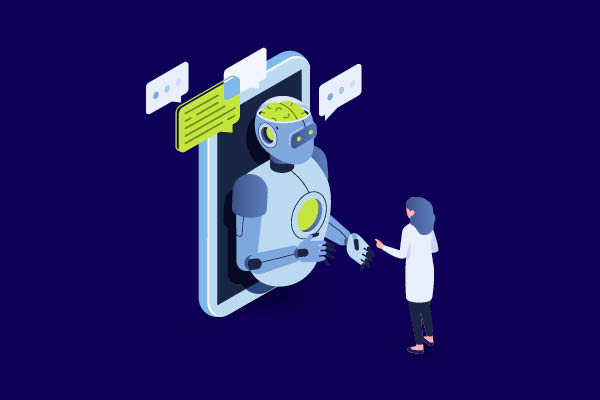
AI is your assistant, not your replacement
AI can’t replace human expertise in SEO. SEO professionals will still play a crucial role in interpreting and implementing the insights provided by AI, as well as adapting SEO strategies to changing algorithms, user behaviors, and business goals. AI tools can be powerful to support and enhance SEO efforts, but human creativity and strategic thinking will remain crucial in the SEO landscape.How can you utilize ChatGPT for SEO purposes?
Here are its suggestions:- Content Generation: Use ChatGPT to generate ideas for quick content for your website, blog, or social media posts. You can input keywords, topic ideas, or specific questions related to your SEO strategy, and ChatGPT can generate content that aligns with your SEO goals.
- Keyword Research: Utilize ChatGPT to brainstorm and generate keyword ideas for your SEO campaigns. You can input seed keywords or topic ideas, and ChatGPT can generate a list of related keywords that can help you identify opportunities for content creation and optimization.
- Meta Tags Optimization: Use ChatGPT to generate optimized meta tags, including title tags and meta descriptions, that are relevant to your target keywords and audience. ChatGPT can provide suggestions and variations for meta tags that can improve your website's click-through rates (CTRs) and search engine visibility.
- SEO Content Optimization: Input your existing content into ChatGPT to get suggestions on how to optimize it for SEO. ChatGPT can provide recommendations on improving content structure, keyword placement, and readability to make your content more search-engine-friendly.
- On-Page SEO: Use ChatGPT to get suggestions on optimizing various on-page SEO elements, such as headings, image alt tags, and URL structure. ChatGPT can provide insights on how to improve these elements for better search engine visibility and user experience.
- SEO Strategy assistance: Utilize ChatGPT to brainstorm and generate ideas for your overall SEO strategy, including content topics, and social media integration. ChatGPT can provide wide suggestions and insights that can inform your SEO planning and execution.
- SEO Troubleshooting: Input specific SEO challenges or issues into ChatGPT to get insights and suggestions on how to resolve them. ChatGPT can provide troubleshooting tips and recommendations to overcome common SEO obstacles.
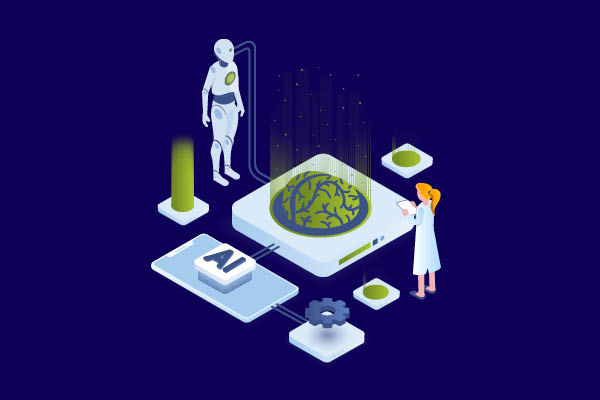 While ChatGPT can provide valuable insights and suggestions for SEO purposes, it's still essential to use human judgment and expertise in evaluating and implementing the recommendations.
SEO best practices may vary depending on your specific industry, audience, and search engine algorithms, so it's crucial to conduct thorough research and consult with SEO professionals to build a comprehensive SEO strategy.
While ChatGPT can provide valuable insights and suggestions for SEO purposes, it's still essential to use human judgment and expertise in evaluating and implementing the recommendations.
SEO best practices may vary depending on your specific industry, audience, and search engine algorithms, so it's crucial to conduct thorough research and consult with SEO professionals to build a comprehensive SEO strategy.
Watch Google's update on Search Generative Experience:












